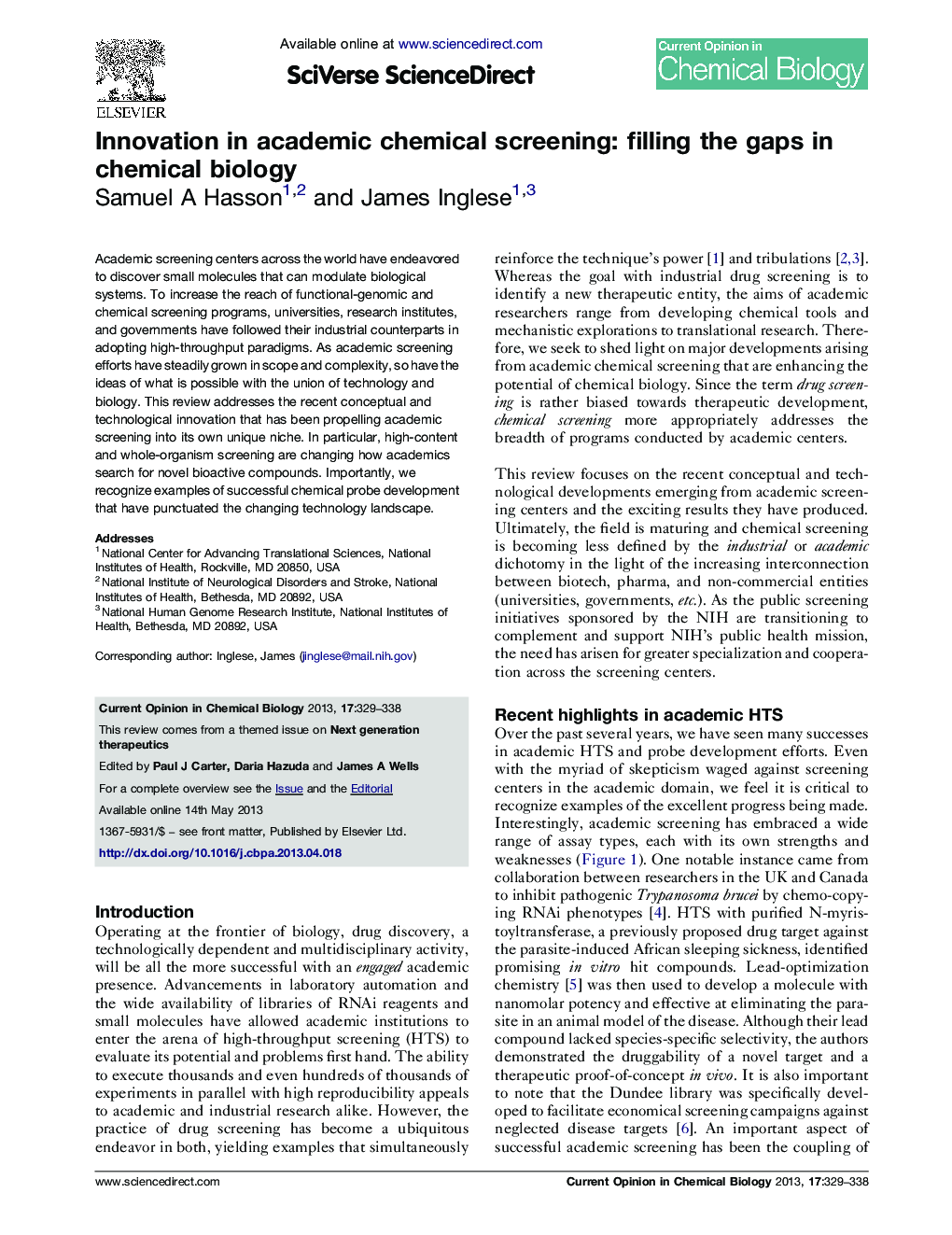| Article ID | Journal | Published Year | Pages | File Type |
|---|---|---|---|---|
| 1259183 | Current Opinion in Chemical Biology | 2013 | 10 Pages |
•Notable achievements in probe development highlight the potential of academic HTS.•Academic use of high-throughput chemical screening complements industrial programs.•The emergence of high-content and model organism screening extend phenotypic assays.•Drug discovery and development paradigm shift to cooperative initiatives with industry.
Academic screening centers across the world have endeavored to discover small molecules that can modulate biological systems. To increase the reach of functional-genomic and chemical screening programs, universities, research institutes, and governments have followed their industrial counterparts in adopting high-throughput paradigms. As academic screening efforts have steadily grown in scope and complexity, so have the ideas of what is possible with the union of technology and biology. This review addresses the recent conceptual and technological innovation that has been propelling academic screening into its own unique niche. In particular, high-content and whole-organism screening are changing how academics search for novel bioactive compounds. Importantly, we recognize examples of successful chemical probe development that have punctuated the changing technology landscape.
